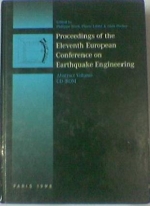Tab Article
The European Conference on Earthquake Engineering is a unique opportunity for European scientists and engineers to gather and attest the liveliness of Earthquake Engineering in Europe. However, the reputation of the European Conference extends far beyond the European countries, and many foreign colleagues take this opportunity to join our community, making this event a major one.
For the Eleventh European Conference, which takes place for the first time in France, more than a thousand abstracts were submitted to the Organizing Committee and over six hundred papers are published in the proceedings, with a fair amount from outside Europe. These contributions are gathered in a CD-ROM with two printed books: one containing all the abstracts and the other one the keynote and invited lectures. No doubt that this wealth of documents will constitute a reference data base for the future in which scientists and engineers will find inspiration to open new paths towards further development in Earthquake Engineering.


